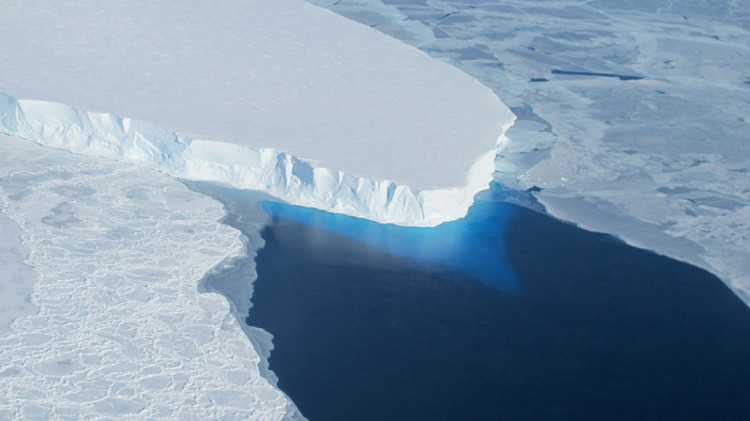Scientists estimate that in the coming years, the so-called "doomsday glacier" in Antarctica, which has earned the moniker due to the great risk of collapse and threat it poses to the increase of the sea level, may retreat quickly, raising fears about the resulting extreme sea level rise.
The Thwaites glacier has melted far more quickly in previous centuries than has been seen in recent years, according to a new study led by the University of South Florida (USF), suggesting that a similar rapid speed of retreat could be sparked in the future.
"Just a small kick to Thwaites could lead to a big response," Alastair Graham, the USF marine geophysicist who led the study, said.
The researchers discovered this by mapping the sea floor beneath the glacier for the first time with underwater drones.
According to the news release, the ridges they studied are "like a footprint" demonstrating where the glacier's base used to be.
It demonstrates that it contracted twice as fast as observed in recent years at some point in the last 200 years.
"Thwaites is really holding on today by its fingernails, and we should expect to see big changes over small timescales in the future - even from one year to the next - once the glacier retreats beyond a shallow ridge in its bed," Robert Larter, a marine geophysicist and one of the study's co-authors from the British Antarctic Survey, said in the release.
One of the widest glaciers on Earth, the Thwaites Glacier in West Antarctica is larger than the state of Florida. However, it just makes up a portion of the West Antarctic ice sheet, which, according to NASA, is large enough to increase the sea level by up to 16 feet.
This area has been extensively watched as the climate crisis has intensified due of its rapid melting and potential for extensive coastal devastation.
For decades, experts have been concerned about the Thwaites Glacier. Researchers questioned if it was in danger of collapsing as early as 1973. They discovered over a decade later that, because the glacier is grounded to the seabed rather than dry land, warm ocean currents might melt the glacier from beneath, causing it to disintegrate from below.
Because of these findings, scientists began referring to the area around the Thwaites as the "weak underbelly of the West Antarctic ice sheet."
Thwaites' melting rate had previously been mapped using satellite images.
An examination of those images in 2020 discovered that Thwaites and its neighbor, the Pine Island Glacier, were splitting apart faster than previously thought.






